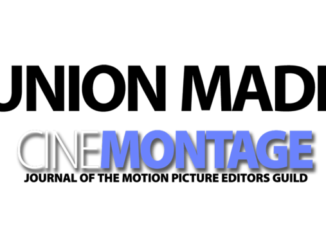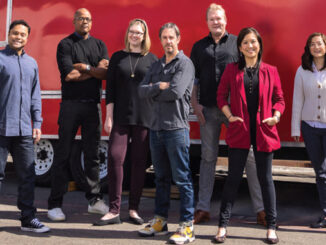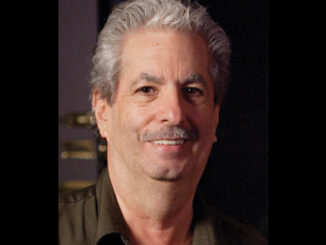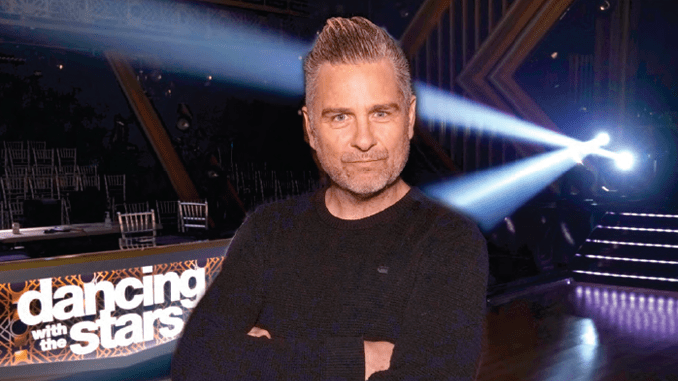
By Kristin Marguerite Doidge
In June 2005, a new show hit Americans’ television screens and quickly became a ratings behemoth. Between the bright, sequin-studded costumes, stunning choreography, and dynamic music, ABC’s “Dancing with the Stars” (“DWTS”) almost instantly made Monday nights more fun — and definitely more glittery.
But what made the show particularly special were the stories that would emerge as star athletes, actors, and musicians would push themselves beyond the limit week after week, often enduring grueling rehearsal schedules, injuries, and personal challenges along the way.
Last fall, in a sign of the times for streaming entertainment, “Dancing with the Stars” moved to Disney+. The show continued to stream live on Monday nights for the duration of its 31st season, in a first for Disney+. It was also first for a major broadcast show to move to a streamer for live worldwide streaming without ads.
The edict for the new editing team? Bring back the heart and emotion of the show — no easy task when the shoot-to-air schedule was just five days. While the hours were long, and the work always fast and furious, the team also found the task thrilling.
“Every week you go into the edit with a sense of what the story might be, but sometimes you have to pivot completely, and the editors have to find the story with the clock ticking,” said Conrad Green, executive producer on “DWTS.” “The team we have is the best in the business at doing that.”
CineMontage caught up with the editor, Duane Fogwell, to go behind the scenes toward the end of last season.
CineMontage: How did you first get involved in this show?
Fogwell: I’m Australian. I’ve been in LA for eight years, and I used to do these kinds of shows back home. I didn’t do dancing back home, but I did “Master Chef” and a lot of those reality-type “shiny floor” shows, as we call them. Over the last eight years, I’ve been working through the ranks. I had the good fortune, just before the pandemic hit, of meeting [executive producer] Conrad Green on a show in 2019. It was a game show called “Don’t” for ABC, which Ryan Reynolds was producing.
It was a really funny show. Adam Scott was hosting, and I ended up being on that show for nine months from start to finish. It really got me through those early dark days of the pandemic, and I really got to know Conrad. He told me he had done “DWTS” when it first arrived in America. He had brought it over from the U.K., where it was called, “Strictly Come Dancing,” and I was just fortunate that I got to know him.
He got a call saying, “Would you like to come back to ‘Dancing With the Stars?’” and he called me straight away and said, “Would you like to come and do the show?” I was ecstatic. It’s one of the biggest tentpole shows in America. Everybody knows it. It was doubly exciting because of this move to streaming, so I was really interested to see how they would pull it all off.
CineMontage: What preparation did you have as far as the reconceptualization of the show for streaming?
Fogwell: Well, nothing until we got in the chair, so to speak. I had done my own research about what had taken place and how it came to be on Disney+, but it really wasn’t until Day One of editing a few weeks ago when we had an all-team Zoom call. Essentially, what they told us was, “We want to put the heart and emotion back into this show and that’s why we have you guys in the chair.”
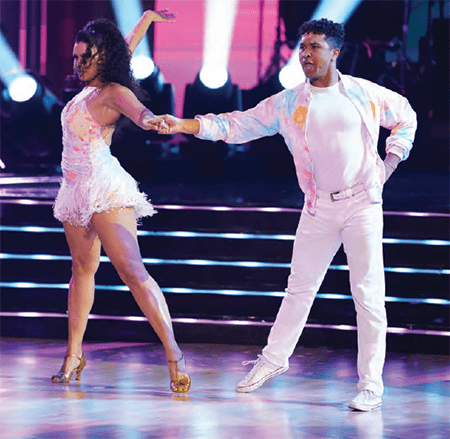
It was nice to hear that they picked all of us, really. I think there were one or two people who had done the show before. Nothing was discussed about “no more ads,” or moving to Disney+. It was more focused on the idea that everything we do has to be directed towards emotion and story.
CineMontage: Could you explain the timeline of that since it’s airing live? How does the editing process work in tandem with production?
Fogwell: We are live on Monday nights. Production then — their day one — is Tuesday. They get the talent back in the studios and they start rehearsing for the following week. I’ll start on Wednesday, and I’ll have a little bit of footage from whatever they did the day before, and we will start just mapping it out between now and Sunday.
It’s really interesting on a show like this, because the footage does just come in dribs and drabs. You’ll have an outline, you’ll know story beats that we want to hit this week, such as if somebody messed up their tango last week. Last week, there was a COVID case, so one of the dancers couldn’t participate, so I’m assuming that’s going to be a big story point.
Essentially, I’ll start mapping it out. We’ll do the easy stuff first. I know that each package will have a flashback to last week, so it starts off, “Last week, Joseph woke up to the news that Daniela had tested positive.” There’ll be that beat. But essentially, as editors, we start the week running and we don’t stop until Sunday night. Last Sunday, it was basically midnight when we stopped and we locked all of the packages. Each editor has between two or three packages. It gets a little easier as the run goes on, I suspect, as teams are eliminated.

Wednesday, Thursday, Friday, I’m at home just working with my producer. He or she is telling me when footage is coming in and still photographs, and we’re asking the field team to get pickups. It’s very “fly by the seat of your pants,” getting these packages done, and essentially, at the end of each day, whatever time that may be, we’re popping whatever we have into a screening folder and the executives are watching where we are with it every day. Then they’ll have discussions about, “Okay, we’re not hitting this beat, we’re not feeling this moment,” so that when they do have the talent again, they can ask for those moments.
CineMontage: Is there any cleanup that happens after the live show before it goes on the streaming platform or does it appear just as it was originally broadcast?
Fogwell: As far as the actual live show, the dancing, there’s no cleanup. That’s just whatever went to air is what we are working with. In terms of the packages we’re doing, we finish Sunday night, and then that goes to an online person who cleans up the imagery. If there’s anything wrong with the graphics, they’ll have a quick polish of that and then, of course, a very quick audio mix to make sure it’s all legal and sounding correct, because when you have a whole bunch of editors all working in different projects and styles, audio levels can be all over the place.
The last show I worked on was a Netflix show, which isn’t going to be on air until 2023, I believe. I worked for two months on just one segment of the nine episodes, so it’s a very different style and pace of editing, which I love. I love it for many reasons, but especially the energy and the camaraderie. But also, it makes you up your game when you try to give the network executives something each night worth viewing, so you’re trying to polish on the run.
CineMontage: How many of you are working on the team and how do you split up the work?
Fogwell: We have eight editors. We each have a different story producer. I think story producer-wise, there’s probably about 12, and they’ll kind of juggle a couple of packages each, so they’re all kind of across everything.
As an editor, I’m pretty much working with one other producer directly day-to-day. As the week goes on, the executives get involved a bit more and you’re screening for the co-executive producer, Alex Cross. Conrad will come in usually on Fridays to watch. On Saturdays, the Disney executives will watch everything as well. I’m generally juggling two, sometimes three packages for the week.
CineMontage: How much footage are you going through to create those?
Fogwell: I believe they rehearse every day for two or three hours, so there’s a lot of footage. That’s where you’re really leaning on those story producers, as well.
Sometimes, it’s a nice thing to do when you start off the day where you just make your coffee and see what the producers have given you overnight, and then go back to the raw footage. You get the vibe.
I’m just interested in when they talk. The visuals of them dancing, I know I’ll have so much of that footage. I’ll grab that when I need it. But what’s more important are those little nuggets of when they actually say something. They can only dance for so long. They just get so exhausted, whereas I did a show for CBS called “Tough As Nails,” and I think my first challenge I had with them was a 12-hour challenge involving 10 teams of two building a concrete slab in the middle of the desert. That’s a heck of a lot of footage to watch.
CineMontage: Do the celebrity contestants get to have any oversight on what’s shown?
Fogwell: Not really. They’re not watching anything, that’s for sure. But I think they would gather what’s going on in their package by what the producers are asking them each day. And at the end of the day, it’s up to them. They either do or don’t talk about it. And obviously, there are always some touchy subjects. [Actress and “DWTS” contestant] Selma Blair, for example, she’s got a medical condition, and she’ll only talk about as much of that as she’s comfortable with.
As an editor, I only have what I have, and if I have an executive in my room saying, “Well, how come we don’t have this?” we just have to be able to say, “Well, we’ve tried every avenue we can to push the story in this direction, and they just don’t want to do it. They don’t want to go there.” The producers are always very understanding as long as you can justify that you’ve tried everything. You don’t want to be getting the same note every day.
CineMontage: What has surprised you most about working on this show?
Fogwell: It’s funny, because it’s a weekly live show, you feel like everybody is just so much more invested. They’re up there dancing in front of America, and it’s almost like everyone’s just waiting for someone to fall or to get egg on their face. The stakes have just been raised so much more than any show that I’ve ever worked on, and you feel that in the edit bay.
‘What’s important are little nuggets of when the dancers say something. They can only dance for so long.’
I watch the show every Monday with my kids, and so now, they’re invested as well. My whole family has their favorites, and we’re all waiting on the scores from the judges. That surprised me how much I’ve really become invested into the journey of these contestants.
I think it’s a combination of that energy you get from it being a live show that you can’t replicate. It’s on Disney+ now. I’m sure they could have easily just said, “Okay. We’ll tape it and maybe it goes out the next day and we can fix up the mistakes and what-not,” but they’ve kept it the same. And now that I’m in the throes of it, I can understand why, because it just has that energy that filters down through every department.
And when I’m on set editing on the weekend, getting the show ready, I’m there. I’m lining up for coffee with the dancers, I’m with the makeup artists, my edit bay is next to the spray tan office. You park your car, and you walk past the art department, and you see these incredible props and you’re like, “Oh, I wonder what that’s for,” and I’m taking a photo for my daughter of this huge pink unicorn. And then, we’re watching the show and it’s like, “Oh, there it is. There’s the unicorn.”
It’s nice to have that immediacy of the full production, which is rare in the post-production in this world. We just sit in our little dark room and make it happen. And I’m a people person. I love that energy. I guess that’s the biggest surprise for me.
CineMontage: It’s a very addicting show in a mesmerizing way.
Fogwell: Absolutely. I had watched it in the past, maybe I would dip in and out of a season. But now I have that insight, and I’m watching the rehearsal footage, and you see how much it means to them. There’s a great example last week: [contestant] Vinny from the “Jersey Shore” was really hurt after week one, and you could tell that it really affected him. He didn’t have a great week one, and he wanted to prove himself. You could see it in the footage — they’re sweating, they’re exhausted. He’s like, “Push me, push me, push me. Keep pushing me every day.” And then when he goes and does his dance, it was great. You could tell the work paid off, and the judges responded accordingly — and we’re all clapping and shouting for him. I never thought I’d be rooting for Vinny of “Jersey Shore.”
Kristin Marguertie Doidge is a freelance writer whose work frequently appears in CineMontage.


